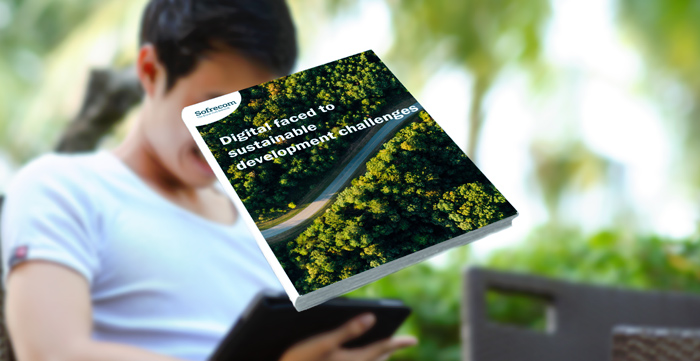
Digital identity, or eID, offers developing countries a unique opportunity to accelerate their national progress.

While many areas of Corporate Social Responsibility are moving on from a "compensation and repair" approach towards a “by design” approach, digital financial services have distinguished themselves through decades of ongoing innovation in financial inclusion.
By adapting to new target groups and unaddressed needs, and supporting advances in digital identification, mobile financial services are exploring the new boundaries of inclusion.
Proof by example: Mobile Money services
In the space of barely ten years, mobile money has become a key factor in financial inclusion for developing countries. While microfinance institutions had, for several decades, found an inclusive and sustainable financial service model, it was often limited to micro-credit which, despite being a crucial service, essentially responds to a one-off need for households.
By offering payment and money transfer services that meet daily needs, mobile money has made the use of financial services accessible to previously unbanked populations whose only means of payment is cash (300 million active accounts each month, and 2 billion USD in daily transactions in 2020 according to the GSMA).
In so doing, mobile money operators have become key players in financial inclusion by providing straightforward responses in terms of access and use. Indeed, the digital component of financial services makes it possible to invent new interfaces that will overcome illiteracy or illectronism: graphic interfaces, voice bots1 and remote biometric identification are all opportunities to break down barriers that are still very much in place.
Current services already provide concrete answers, however they must continue to evolve in order to strengthen their impact on the most excluded and vulnerable populations. The ability to serve the rural world, with solutions adapted to the complexity of the agricultural sector's financial and material flows, remains a major challenge.
By playing up the value of certain key assets in favor of financial services, mobile telephone operators have introduced the first form of digital infrastructure for the benefit of all players. Among them, the territory's coverage by a network of agents and light interfaces (such as the USSD menus) have removed the constraint of knowing how to manage cash payment flows on anyone seeking to market goods and services.
This has benefited financial service providers themselves, as most microfinance institutions now offer credit disbursement and repayment facilities via mobile money, as well as a range of essential services. By opening up their APIs, mobile money operators have, in addition to participating in digital financial inclusion, facilitated inclusion "through digital" and access to a whole range of services requiring payment. The advent of pay-as-you-go models, enabling remote prepayment of water or electricity, is therefore entirely dependent on mobile money.
Digital identity: an essential key to inclusion
Given the sovereign nature of money and the control of financial flows – subject to regulations in terms of money laundering and terrorist financing, advances in digital services tie in closely with advances in the holding of identity documents and the digitization of identification systems.
Globally, one quarter of children aged under five have never been registered at birth2 they have no proof of legal identity that will protect their rights and ensure universal access to social services. Goal 16.9 of the sustainable development agenda, adopted unanimously by the 193 member states of the United Nations in 2015, recommends that states "provide legal identity for all, including birth registration, by 2030".
The absence of identity papers limits the full exercise of citizens’ rights and freedoms by increasing the vulnerability and social exclusion of populations, while the absence of a digital identity system hinders the effective planning of public resources and the implementation of policies and programs for inclusion and social well-being.
Modern societies have new requirements for identity that must be accessible, digital, unified, integrated, centralized and transversal, but nevertheless reliable, robust and secure. Digital identity, or eID, offers developing countries a unique opportunity to accelerate their national progress:
- In Estonia, eID has been the cornerstone of all the country's digital services for over 20 years. It is part of the daily transactions of every citizen in the public and private sectors. People use their eID to pay their bills, vote online, sign contracts, shop, access their health information and much more.
- India’s Aadhaar cards, issued to a population of nearly 1.2 billion, are required to authenticate online, collect retirement pensions, obtain ID papers, or benefit from food subsidy programs.
- On the other side of the planet, the Peruvian national identification system, introduced in the 1990s, helped the country to quickly emerge from a long period of political unrest and economic instability by providing an effective tool to combat lack of documentation first, and poverty second.
In general, eID changes the way services are provided, promotes the growth of a country’s digital economy, and supports effective safety nets for disadvantaged and underprivileged populations. The advent of new technologies – in the form of mobile devices, social media and the Internet – offers tremendous opportunities for developing countries. Combined with mobile phones and the Internet, identification serves to provide services electronically, which increases the efficiency of governments and private companies, and results in the creation of new online products and services.
While considerable progress has been made in the sphere of financial inclusion and digital identification, some of the barriers to be overcome in developing countries still lie with digital fundamentals, namely the ability to cover populations excluded from networks, enable access to mobile equipment, and maintain enough physical service points to support the digital transition.
Written by : Antoine Navarro, Philippe Tardieu and Karime Bensaid
1https://hellofuture.orange.com/fr/construction-dun-bot-vocal-en-langue-subsaharienne/
2Unicef source: https://data.unicef.org/topic/child-protection/birth-registration/






